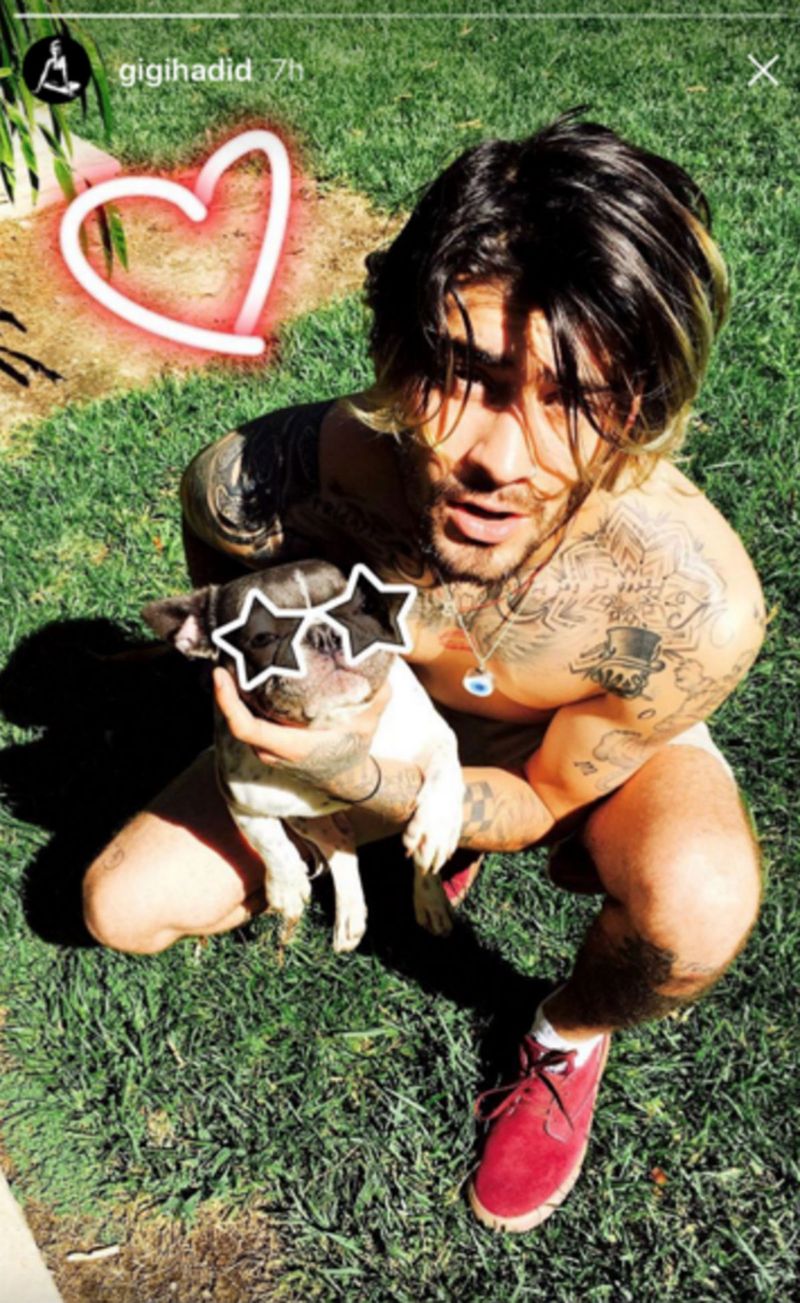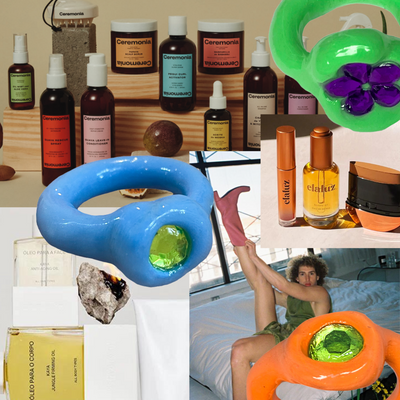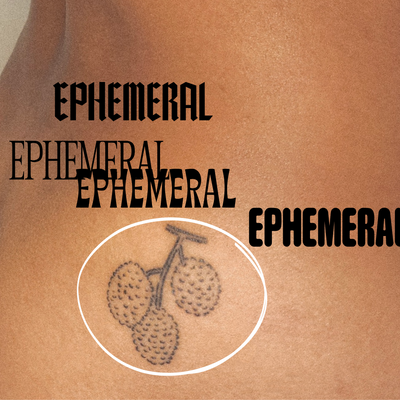
Tribal tattoos, couple tattoos, eyebrow tattoos, Zayn tattoos. Whatever your jam, chances are you’ve thought about getting one at one point or another.
I myself sat down to get my first tattoo a little over a month ago and was scared. Like, really scared. Despite having witnessed many a tattoo on other people, I still had so many unanswered questions about what was about to happen to my body. How does a tattoo even work? Will I look like a total loser if I go by myself? Is Aquaphor or Vaseline the best ointment to help with healing? Will I die like someone unfortunately did if I go into the ocean when it hasn’t healed?
SEE ALSO: Everything you wanted to know about your nipples
To make things a little less overwhelming and to answer any of the questions you may have, we spoke to some experts about how to make the process as smooth as possible. Dr. Melissa Kanchanapoomi Levin, board certified NYC dermatologist and clinical instructor at Mount Sinai Icahn School of Medicine, Christian Cervantes and John Reardon, NYC tattoo artists , and Donghwan Kim (aka Evan), the celebrity tattoo artist to guys like Frank Ocean, Luka Sabbat, among others. We asked each of them to give us all answers to the burning questions we had about inking our tender (and sensi!) skin.
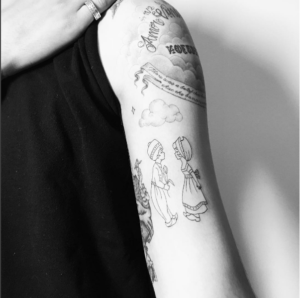
I know what a tattoo is but how does it even work?
“A tattoo is the insertion of oxidized metal pigment particles via a needle into the skin,” says Dr. Levin to Very Good Light. “Because the tattoo is placed with a needle, this is essentially a wound to the skin. Therefore, the immediate reaction from the tattoo can be crusting and pin prick bleeding. Proper wound care is important after a tattoo is placed.”
Will it hurt? And why are certain body parts more painful, like the weird flab under my arms?
“The feeling of a tattoo is unique to itself,” says John to Very Good Light. “It’s kind of like a bee sting, or better, like drawing on sunburned skin with a ball point pen. It stings but it’s not too bad. Everyone feels pain in a different way but generally speaking the easiest places are on the arms. The outside of your upper arm is the easiest. Under the arm (medial side) and around the elbow and ditch (the crease in your arm) are more sensitive. Anywhere on the torso generally sucks. Lower back, ribs and sternum being the worst. Ass cheeks and towards the ass crack were pretty bad for me.”
Do I have to go it alone or can I have a friend with me?
“I’ve always said tattooing isn’t a spectator sport,” says Christian to Very Good Light. “The less distractions are better when doing a tattoo. And if it’s a long tattoo your friend doesn’t want to sit in the waiting area for hours alone.”
“Normally it’s up to the person getting tattooed, but some artists are a little sensitive if there are more people around,” says Evan to Very Good Light. “The best practice is having just one friend with you. You can come with friends to get their advice but alway remember that the final choice has to be yours.“
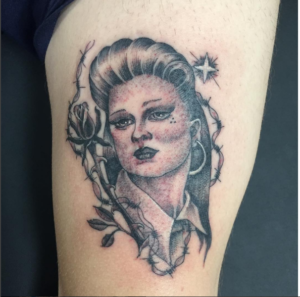
Any slang I should know so I’m not out of the loop?
“There are common terms many artists use like ‘style,’ ‘design,’ ‘shading,’ ‘black and grey or color,’ and these mostly refer to how you want your tattoo to be like,” Evan says to Very Good Light. “It’s good to do research on the different artistic styles (Japanese, American, neo-American, realistic, watercolor to name a few) of tattoos to make it easier in explaining what you want your artist to do for you.For the style that I do, it’s really delicate lines so I will use terms like ‘fineline’ which means really thin lines, and ‘bleeding’ which refers to the ink bleeding or becoming blurry (not actual blood).
If you’re not aware of what terms mean, please ask your artist to clarify! It’ll save you both time and allow for the artist to understand what you’re looking to get!”
Ok. But can I get an infection and die?
“In a good shop there shouldn’t be any health risks,” says John to Very Good Light. “No one in a reputable shop reuses needles as they are very inexpensive. Any infection is most likely caused by your tattoo coming in contact with something at your house like a couch your dog was sleeping on after a long day at the dog run.Some people can have an allergic reaction to some inks especially reds, most experienced tattooers know which brand of inks those are and don’t use them. Over use of the body part with the tattoo may cause the tattoo to become very irritated. For example, if you get a tattoo around your ankle and then walk around the city all day, the tattoo can become inflamed.”
Okay. Maybe dying is being very extra. How about passing out?
“Some people can pass out if they are too nervous or in bad conditions (not eating or drinking before a tattoo session is a bad idea!)” says Evan to Very Good Light. “They should ask their doctor or dermatologist first if they have any bad allergies. Most inks are fine but some people are known to be more sensitive to certain colors (mostly red) because of the different ingredients and metals in it. Also let your artist know before they start if you have a latex allergic. You definitely have to make sure that you go to a reputable tattoo parlor since they’re more inclined to follow health codes. Be sure to keep an eye on the equipment they use to make sure they open a new pack of needles, that everything is sterilized and they use disposable tools as well.”
Is there anything I can do beforehand to make it as painless as possible?
“Be well rested. Allow the tattooer to do his or her thing especially if you are there to get that tattooist’s personal style,” says Christian to Very Good Light. “Be sure you want the tattoo before making the appointment. Relax.”
“Be sure you’re on time! Not all artists draw up the design for you beforehand so that takes time as well, especially when you ask for something very detailed,” says Evan to Very Good Light. “You should have an idea of what tattoo you want. There are bunch of styles of tattoos and artists and some styles might not be your taste so just be sure to have a good image to reference. Come in with an open mind and ears because a good artist should have good pointers and advice in terms of location, style and design!”
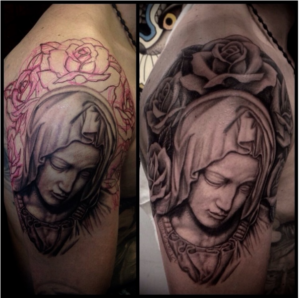
I know I want a tattoo, but have no idea where to go. How do I find an artist?
“If you’re going to get a tattoo make sure you look at the person’s work beforehand,” says Christian to Very Good Light. “If you like what you see make an appointment. Some tattooers only specialize in one thing so if you go in wanting a certain style and you don’t see they do it, don’t force them to do something they don’t usually do. And also if you don’t like the vibe of an artist, don’t get tattooed by him or her, there are plenty of artist that do good work.”
I know care is crucial, what is the best way to take care of a healing tattoo?
Below is the regimen Dr. Levin recommends to her patients to best heal their tattoos.
1 Rinse and repeat
Cleanse with a gentle cleanser twice daily. Dr. Levin didn’t specify a brand or formula, but the artist who tattooed me recommended an unscented Dove bar.
2 Ready for that jelly
Apply a fragrance-free water-based lotion or cream to the tattoo frequently throughout the day. Petrolatum-based products such as petroleum jelly can cause the ink to fade so, Dr. Levin does not recommend Vaseline.
3 Let’s talk SPF
Protect the tattoo from the sun by applying broad-spectrum, water resistant sunscreen with a sun protection factor (SPF) or 30 or more. Ultraviolet (UV) light can fade tattoo ink. Also, it is important to apply your sunscreen 15 minutes before going outdoors and reapply every 2 hours.
4 (Don’t) burn baby, burn
Avoid tanning beds, tanning, or a sunburn. Ultraviolet light not only can fade tattoo ink but also can cause painful blistering reactions.
5 Check yourself
If the tattoo changes or develops any sort of skin reaction, see a dermatologist for further evaluation. Certain tattoo pigments can cause allergic or inflammatory reactions in the skin even years later.
6 Better safe than sorry
Before getting a tattoo placed, try to pick an area that is free of moles on the body. It is difficult to monitor changes in a pre-existing mole if it’s in a tattoo.

